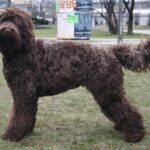
The popularity of dog breeds is undeniable, as they bring companionship, joy, and love to many households around the world. Among the diverse array of breeds, some individuals seek out hypoallergenic dogs to mitigate allergic reactions caused by pet dander, saliva, and urine. One breed that often sparks interest in this category is the Maltese dog, leading many potential owners to wonder, is a Maltese dog hypoallergenic?
To explore this question thoroughly, we will delve into the characteristics of the Maltese breed, their potential to produce allergens, and grooming practices that can help manage allergies.
Understanding Hypoallergenic Dogs
Definition of Hypoallergenic
The term hypoallergenic refers to a reduced likelihood of triggering allergic reactions in sensitive individuals. While no dog is entirely free of allergens, hypoallergenic breeds tend to produce fewer allergens compared to their counterparts. Common misconceptions abound, such as the belief that hypoallergenic dogs do not shed at all. In reality, these breeds may still shed some hair but are less likely to release dander and other allergens into the environment.
Reasons for Hypoallergenic Breeds
Pet allergies are often triggered by proteins found in dog saliva, skin, and urine. When a dog grooms itself, these proteins can become airborne, leading to allergic reactions in sensitive individuals. The science behind hypoallergenic breeds suggests that these dogs may have hair rather than fur, resulting in less dander and fewer allergens being spread throughout the home.
Overview of the Maltese Dog Breed
History and Origin
The Maltese breed has a rich history that traces back to the Mediterranean region, specifically the island of Malta. Known as the “Maltese Lion Dog,” these small companions were cherished by nobility and have been recognized for their affectionate nature and luxurious coats. Their long history as companion animals contributes to their popularity today.
Physical Characteristics
Maltese dogs are small, typically weighing between 4 to 7 pounds and standing about 8 to 10 inches tall at the shoulder. Their long, silky white coats are one of their defining features, requiring regular grooming to prevent matting and maintain their elegant appearance.
Temperament and Behavior
Maltese dogs are known for their lively and affectionate personalities. They are friendly, social, and often form strong bonds with their families. Their playful nature makes them great companions for children and other pets. However, they can also be prone to separation anxiety if left alone for extended periods.
Maltese Dogs and Allergies
Do Maltese Dogs Produce Allergens?
When considering if a Maltese dog is hypoallergenic, it’s essential to examine their potential to produce allergens. Maltese dogs do produce dander and saliva, like all dogs. However, many owners report that their Maltese do not trigger significant allergic reactions compared to other breeds. This could be attributed to their lower shedding and the unique structure of their hair, which may trap allergens more effectively.
Factors Contributing to Allergic Reactions
It’s crucial to remember that individual reactions to dog allergens can vary widely. Factors such as the frequency of grooming, the cleanliness of the home, and the individual’s specific sensitivities play significant roles in determining whether a Maltese will trigger allergies. Consistent grooming and cleaning can greatly reduce the presence of allergens in the home.
Testimonies and Anecdotes from Maltese Owners
Many Maltese owners have shared their experiences with allergies, noting that while some family members may have mild reactions, the breed is generally manageable for allergy sufferers. Veterinary experts often echo these sentiments, suggesting that potential owners spend time with Maltese dogs before making a decision to better understand their individual tolerance levels.
Grooming and Maintenance of Maltese Dogs
Grooming Requirements
Maltese dogs require regular grooming to maintain their beautiful coats and minimize allergens. Owners should aim for daily brushing to prevent tangles and matting. Bathing should be performed every few weeks, using gentle dog shampoos that are suitable for sensitive skin. Recommended grooming tools include slicker brushes, combs, and dog-safe conditioners to help keep the coat healthy and manageable.
Reducing Allergens in the Home
To minimize allergens related to Maltese dogs, owners can take several proactive steps:
- Regular Cleaning: Frequent vacuuming and dusting can help reduce the accumulation of dander and hair in the home.
- Air Purifiers: Utilizing HEPA air purifiers can capture airborne allergens, improving the overall air quality.
- Dog Bathing Routine: Establishing a regular bathing routine can help lessen the amount of dander released into the environment.
- Designated Pet Areas: Creating areas in the home where the dog is not allowed can help manage allergens, especially in bedrooms.
By implementing these practices, Maltese owners can create a more allergy-friendly environment.
Alternatives to Maltese Dogs
Other Hypoallergenic Breeds
If you’re still uncertain about whether a Maltese dog is hypoallergenic, consider exploring other breeds that are often regarded as hypoallergenic. Here are a few alternatives:
- Poodle: Available in standard, miniature, and toy sizes, Poodles have curly coats that trap dander and hair, making them less likely to trigger allergies.
- Bichon Frise: With their soft, curly coats, Bichon Frises are known for being friendly and playful while producing fewer allergens.
- Shih Tzu: This breed has a long, flowing coat, similar to the Maltese, and is often well-tolerated by allergy sufferers.
- Yorkshire Terrier: With their fine hair and low shedding, Yorkies are popular among allergy sufferers seeking a small companion.
These breeds share some characteristics with the Maltese and may be good alternatives for those with allergies.
Considerations for Potential Dog Owners
When choosing a dog, it’s essential to consider individual circumstances and the specific needs of each breed. Spend time interacting with different dogs to gauge your reaction. Visiting shelters or breeders can help you identify a breed that best suits your lifestyle and allergy tolerance.
Conclusion
In summary, while Maltese dogs do produce some allergens, many owners find them manageable for allergy sufferers. With their charming personalities and beautiful coats, they can make delightful companions. Ultimately, the choice of whether to adopt a Maltese or another breed should depend on personal circumstances, potential allergic reactions, and grooming capabilities.
Taking the time to understand the Maltese breed and exploring individual allergy responses will guide potential dog owners in making an informed decision that suits their household.
Frequently Asked Questions (FAQs)
Are all Maltese hypoallergenic?
Not all Maltese dogs are completely hypoallergenic, but they tend to produce fewer allergens than many other breeds. Individual reactions can vary widely.
What should I do if I have allergies but want a dog?
Consider breeds that are known to be hypoallergenic, such as the Maltese or other small breeds. Spend time with potential dogs to see how your allergies react before making a decision.
How can I tell if I’m allergic to my Maltese?
If you suspect you are allergic, consider spending time with the dog in a controlled environment. If symptoms arise, consult with an allergist for proper testing.
What other breeds are best for allergy sufferers?
Other breeds considered hypoallergenic include Poodles, Bichon Frises, Shih Tzus, and Yorkshire Terriers. Each breed offers unique qualities that may fit your lifestyle and allergy needs.









